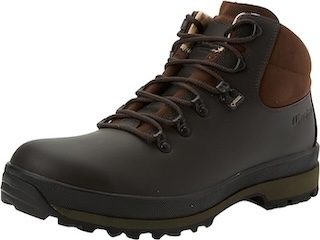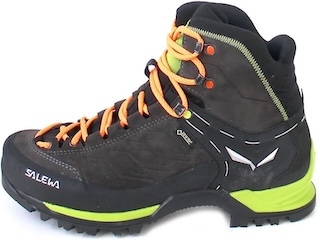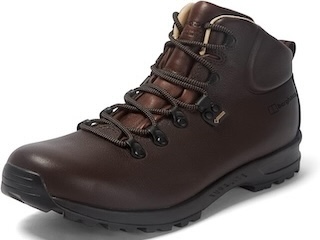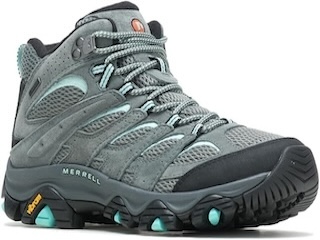Take in Rewarding Climbs and Panoramic Views on This Great Coum Walk
To start your Great Coum walk, begin in the picturesque village of Dent, nestled in the heart of Dentdale. You’ll find a pay-and-display car park conveniently located in the village centre, opposite Dent Primary School on Laning. After parking, cross the road and head south, walking by the side of the school. The lane, called Dragon Croft, will lead you past the car park for the Sun Inn on your left. Continue along Dragon Croft until you reach the end of the lane, where Flintergill House comes into view on your right.
As you pass Flintergill House, the enchanting woodlands of Flinter Gill open before you. This narrow valley offers a serene atmosphere, with a woodland path that steadily ascends through the trees, following the course of Flinter Gill. This well-trodden trail is straightforward to navigate, providing a peaceful start to your hike. After a steady climb of just over half a mile, the woods give way to open countryside. From here, the path remains clear as you continue for another quarter of a mile, eventually reaching a junction with Green Lane.
When you arrive at the junction, turn left and follow Green Lane in a south-easterly direction. After a scenic mile of hiking, leave Green Lane by turning right to begin your ascent to Great Coum. Although the path may become less distinct, you can use the nearby wall as a reliable guide. Expect some steep sections during the climb. The route from Green Lane to the summit of Great Coum spans just over a mile and provides a rewarding challenge.

Upon reaching the top of Great Coum, follow the wall westward to Crag Hill. Midway along this route, consider a detour northward across the summit to visit a large cairn perched above Crag Side. The views from this vantage point are spectacular, making it an ideal spot for lunch. After enjoying the scenery, return to the wall and continue toward the summit of Crag Hill.
After summiting Crag Hill, retrace your steps by following the wall back east towards Great Coum. From here, take another wall on your right and head south to Gatty Pike. Your descent eastward from Gatty Pike begins at this point. Although no official paths exist, the wall can guide you. The descent is manageable, and soon you’ll reach a well-defined track, which can sometimes be muddy.
At the track, turn left and follow it north for about 1¼ miles. Avoid the left turn onto Green Lane, and instead, stay on the track called Nun House Outrake, descending north-east. This path leads downhill, passing High Nun House before connecting with the minor road known as Deepdale Lane.

On Deepdale Lane, turn left and continue through the hamlet of Slack. Less than a quarter of a mile after Slack, you’ll reach a crossroads with another minor road just before Howgill Bridge. Here, go straight ahead and follow the track known as Double Croft Lane. This downhill route takes you through the farm at Double Croft and onto the Dales High Way, which runs alongside the River Dee.
Finally, turn left onto the Dales High Way and enjoy a relaxing stroll along the Dee. After a short distance, the trail crosses a field and brings you to Church Bridge on the minor road called Beech Hill. Turning left onto Beech Hill will guide you back into Dent village, completing your Great Coum walk.
This beautiful and varied nine-mile Great Coum walk offers something for everyone. You’ll experience the interest of Flinter Gill, the exhilaration of climbing steep slopes, and the stunning views from Great Coum. Finally, enjoy a peaceful riverside stroll along the River Dee, leading back to the charming cobbled streets of Dent.
Great Coum Walk: Maps and Tools
Visit either the OS Maps website or the Outdooractive website to view this walking route in greater detail. Both platforms offer a range of features, including the ability to print the route, download it to your device, and export the route as a GPX file. You can also watch a 3D fly-over and share the route on social media.
Great Coum Walk: Distance, Duration, Statistics
Distance: 9 miles
Distance: 14½ kilometres
Duration: 4¾ hours
Ascent: 1916 feet
Ascent: 584 metres
Type: Circular walk

Recommended Ordnance Survey Map
The best map to use on this walk is the Ordnance Survey map of the Yorkshire Dales Southern & Western Area, reference OS Explorer OL2, scale 1:25,000. It clearly displays footpaths, rights of way, open access land and vegetation on the ground, making it ideal for walking, running and hiking. The map can be purchased from Amazon in either a standard, paper version or a weatherproof, laminated version, as shown below.
Standard Version
About Great Coum
Great Coum stands at an elevation of 687 metres with a drop, or prominence, of 219 metres. It is classified under several Database of British and Irish Hills (DoBIH) listings: Marilyn, HuMP, Simm, Hewitt, Nuttall, Buxton & Lewis, Bridge, and Clem. Additionally, its Ordnance Survey grid reference is SD 701 836. The parent peak of Great Coum is Whernside, one of the Yorkshire Three Peaks Challenge mountains.
Although Great Coum is generally considered a hill, its elevation and prominence sometimes lead people to refer to it as a mountain. In British terminology, hills and mountains are often distinguished by height, with mountains typically being over 600 metres tall. Because Great Coum reaches 687 metres, it qualifies as a mountain by that definition.
Great Coum’s Unique Location in Cumbria
Despite being located within the Yorkshire Dales National Park, Great Coum falls under the South Lakeland district of Cumbria. The highest point of the hill lies in Dent parish, while the boundary with Casterton parish crosses the summit. This unique geographical position allows Great Coum to straddle different parishes and offer varied views of the surrounding landscape.
Neighbouring peaks such as Crag Hill, Green Hill, and Gragareth make this area a popular destination for walkers and hikers. With its striking elevation and scenic surroundings, a Great Coum walk offers a rewarding experience for anyone exploring the Yorkshire Dales and its nearby regions.
Great Coum Walk: My Photos
The waters of Flinter Gill cascade gracefully over the ‘Dancing Flags’ just outside Dent village centre. This area of flat, natural rock slabs has been used for centuries by local weavers for ‘waulking’ their newly woven lengths of cloth, known as ‘webs’. They would thoroughly wet the fabric and then tread on it with bare feet, causing it to shrink slightly and ‘felt up’, creating a thicker and warmer material. This process, once universally practised, was referred to as ‘dancing the web’, hence the name of the stones. The association with weaving and dancing may explain the enduring belief that fairies frequented this particular spot.

The ancient ‘Wishing Tree’ stands beside the stone track that winds through the Flinter Gill ravine. According to tradition, the tree’s guardian spirit promises to grant a wish to anyone who walks three times clockwise (‘deiseal’) through the twisted arch of knotted roots around its base. However, misfortune awaits those who walk anti-clockwise (‘widdershins’) around the tree.

Halfway through the Flinter Gill ravine, I arrive at High Ground Farmstead. The barn here is open for viewing, housing a fascinating collection of period farm machinery and implements. It’s a highlight of my Great Coum walk.


Opposite the barn at High Ground Farmstead, I come across a recently excavated lime kiln. Burning lime was once a crucial task on many Yorkshire Dales farms. The process involved filling the kiln with coppice wood, peat, or even coal when available, and layering it with broken limestone. After burning for several days, the lime was raked out and slaked with water to produce quicklime, which had numerous domestic and agricultural uses.

At the top of the Flinter Gill ravine, I reach the location of a toposcope, with panoramic views of the surrounding landscape. The toposcope points to various mountains in the area, including peaks in the Howgill Fells, such as The Calf and Calders, which can be seen from this vantage point.


From the slopes of Great Coum, I enjoy sweeping views to the north-west, where the Howgill Fells dominate the horizon.

As I look north-east from Crag End, on the approach to Great Coum, I take in the view towards Aye Gill Pike on the northern side of the Dentdale valley.

Making my way from Great Coum to Crag Hill, I encounter a guiding cairn about 200 metres west of the Great Coum summit. With Crag Hill in the background, this cairn marks the next stage of my journey.

On my way from Great Coum to Crag Hill, I take a brief detour north to a magnificent cairn above The Crag. From here, I’m treated to spectacular views of the Howgill Fells and the surrounding countryside, with the Lake District mountains visible on the western horizon.


As I gaze west from The Crag, I get fantastic views towards Calf Top, which overlooks Barbondale.

I finally reach the triangulation pillar on the Crag Hill summit, standing at a height of 682 metres (2238 feet).

From Crag Hill, I can see Morecambe Bay to the south-west. I highly recommend this Great Coum walk, especially when the weather is clear.

Looking south-east from Crag Hill, I catch a glimpse of Ingleborough, easily recognisable by its distinctive flat plateau.

Following the route south from Great Coum, I arrive at Gatty Pike, an area of boulders with Gragareth in the background.

Here’s another view of Ingleborough, this time from Gatty Pike. From this spot, I begin planning my descent eastward down to the bridleway below, using one of the dry stone walls as a guide.

As I follow the wall downhill, the western slopes of Whernside are always visible, just over two miles away.

During my descent, I’m also rewarded with a view north-east towards Deepdale.

I pass, but do not cross, these lovely stepping stones on the River Dee in Dentdale, about a mile east of Dent village.

This part of my Great Coum walk takes me along the Dales Way beside the River Dee. It’s a relaxing and easy stroll, perfect for unwinding after the more challenging sections of the walk.

Back in Dent, I pass by St Andrew’s Church. This 12th-century church was rebuilt in 1417, likely under the care of the monks from Coverham Abbey near Middleham. Further restorations took place in 1590, 1787, and 1889.

I conclude my Great Coum walk by wandering through the beautiful cobbled streets of Dent village, lined with charming white-walled cottages.


Amazon’s Top Walking Boots: Four Standout Choices for Men and Women
For walking and hiking, the right boots are essential for both comfort and safety. While Amazon boasts a wide range, certain boots emerge as top-sellers. From those, here are four I personally favour. As an Amazon affiliate, I may earn a small commission from any purchases made through the links provided. This helps support the upkeep of this website. Rest assured, you won’t pay a penny extra, but your purchase will contribute to keeping my site running smoothly. Happy walking!

Berghaus Men’s Hillmaster II Gore-Tex Walking Boots
These fully waterproof leather walking boots feature a Gore-Tex lining, ensuring no water enters whilst allowing feet to breathe and stay cool. Made from full-grain leather, they promise unmatched durability and comfort. The boots come with memory foam tongues and cuffs that mould to your feet for a tailored fit, and the Vibram Hillmaster outsoles offer confidence on challenging terrains.

Salewa Men’s Mountain Trainer Mid Gore-Tex Walking Boots
Made from durable suede and abrasion-resistant textile, these men’s hiking boots are both lightweight and sturdy. The upper material is enhanced by a 360° full rubber sheath. Their dual-layer midsole with Bilight technology ensures ergonomic cushioning and grip, especially on extended hikes. The Vibram Wrapping Thread Combi outsoles allow a natural walking feel, and the Gore-Tex lining provides waterproofing, breathability, and optimal weather protection. Furthermore, the patented Salewa 3F system ensures flexibility, a secure heel grip, and a blister-free fit.

Berghaus Women’s Supalite II Gore-Tex Walking Boots
Specially designed for women, these hiking boots offer waterproofing and breathability, thanks to their Gore-Tex lining. Crafted from full-grain abrasion-resistant leather, they’re durable enough for the toughest hikes. The Supalite soles ensure stability and traction, and the EVA midsoles add comfort for extended walks.

Merrell Women’s Moab 3 Mid Gore-Tex Walking Boots
These hiking boots incorporate a Gore-Tex waterproof membrane, blending breathability with superior waterproof performance. The combination of pigskin leather and mesh on the uppers, along with the suede outer material, ensure durability and style. Enhancements include 100% recycled laces, webbing, and mesh lining. Additionally, bellows tongues, protective toe caps, and Vibram TC5+ rubber soles ensure protection and ease on any terrain.